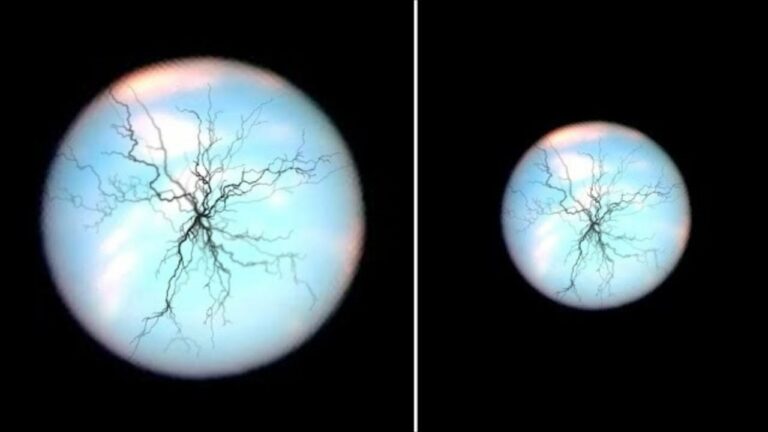Astronomers Have Just Accidentally Discovered the Most Terrifying Planet in the Milky Way!
Are you ready to plunge into the dark secrets of our universe? Today we bring you an incredible discovery that will make even the bravest explorers shudder: Scientists have just discovered the most terrifying planet in the Milky Way – and it happened by accident!
We’ll take you on a journey to this mysterious and terrifying place that dwarfs anything you’ve ever seen before. Buckle up, because what you’re about to see is beyond the limits of your imagination.
Search for new worlds
In a nutshell: In astronomy, an exoplanet is a planetary celestial body that does not orbit the sun but is gravitationally bound to another host star. In view of the number of over 5,300 known exoplanets mentioned at the beginning of this article, one might think that this field of research already looks back on an extremely long history – but this is not quite correct. In fact, the first confirmed discovery of an extrasolar world dates back to 1992: At that time, experts Aleksander Wolszczan and Dale Frail succeeded in identifying three planetary companions in the realms of the pulsar Lich.
After the starting signal for the galactic planet search was given, countless other white spots should be erased from the star maps until today.
However, the direct observation and confirmation of an alien planet is an absolute exception. Instead, various indirect detection methods have emerged as more promising approaches: First and foremost is the so-called transit method. In this method, researchers focus their attention on the changes in brightness of a star. When the planetary companion passes by its host star from our terrestrial point of view, this is always associated with a noticeable variation in its brightness.
The transit method not only allows to reveal the mere existence of a planet, but also gives us insight into the basic characteristics of the celestial body. These include not only the orbital period but also the planet’s orbital inclination, radius and rotational behavior. Finally, spectroscopic investigations allow us to make statements about the atmospheric composition, the temperature and the reflectivity.
Do not forget to share your opinion with us to provide you with the best posts !




0 Comments